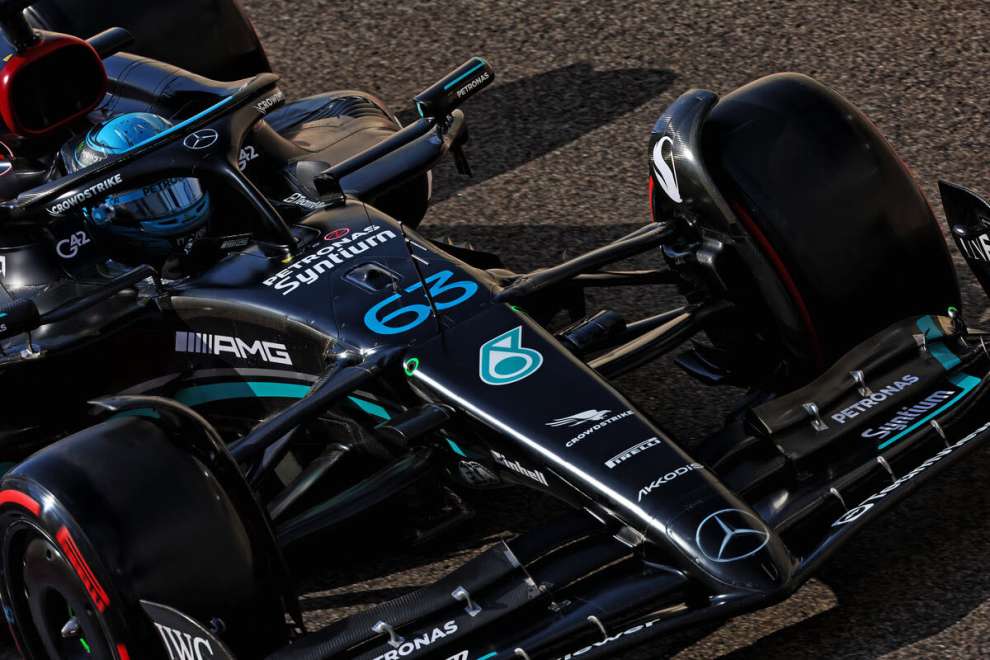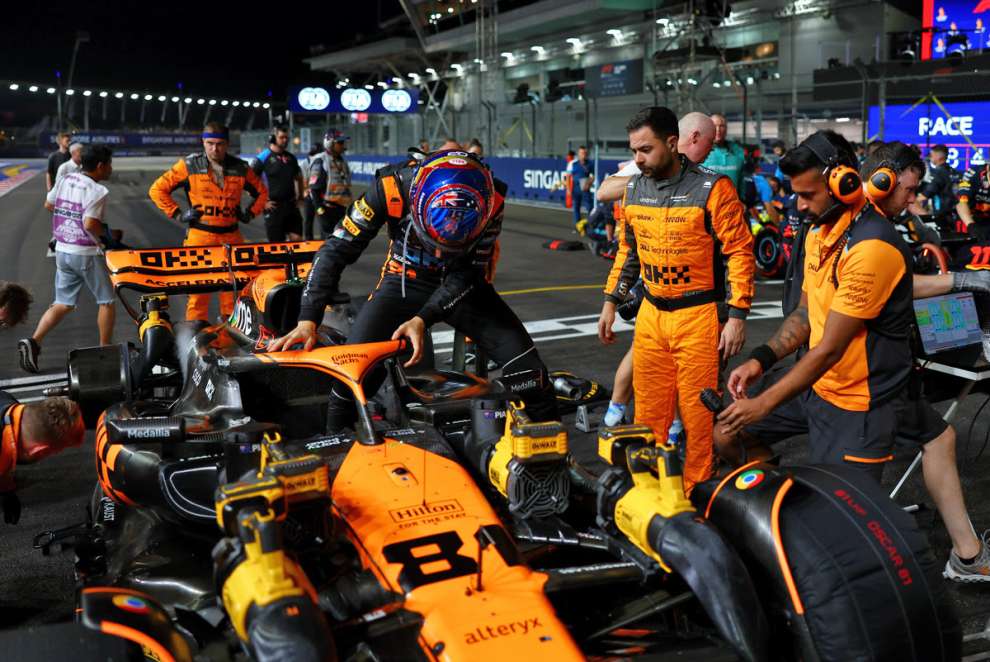The sprint races call into question the Parc Fermé regime. The topic was raised after the last US Grand Prix in Austin, when the race direction had disqualified the cars of Charles Leclerc and Lewis Hamilton due to excessive wear of the skid block, the resin board under the bottom. On that occasion Ferrari and Mercedes had made an error of judgement, aiming for a very aggressive ground clearance to benefit from maximum aerodynamic efficiency. However, due to the Sprint format, the only free practice session had not helped to correctly estimate the wear of the surface, on a particularly bumpy road surface.
The same difficulty was encountered in Spa, on a weekend affected by rain and where the compression of the Eau Rouge causes the cars to rub violently against the asphalt. On that occasion, however, none of the cars inspected had incurred a disqualification. This does not mean that discussions have begun in the paddock on a possible revision of the Parc Fermé, which prohibits the teams from carrying out certain operations on the cars from the start of qualifying until the conclusion of the Grand Prix. “Opening the Parc Fermé could be positive. Maybe we can discuss which aspects to open”Frederic Vasseur's commentary in December. The concept of opening or closing the Parc Fermé, in fact, is not absolute, but can be discussed on various levels depending on the parameters on which one wishes to intervene.
Suspensions
One of the most stringent aspects of the Parc Fermé regime is the prohibition on correcting the mechanical setting of the suspension once qualifying has begun. Article 40.1 of the sporting regulations states: “Each team must provide the Technical Delegate a document with the suspension configuration for both cars, before each leaves the pit lane for the first time during qualifying.”
Parc Fermé freezes the static camber and convergence angles, the various stiffness and damping constants of the spring-shock absorber group and above all the heights from the ground. At the moment the main concern concerns the wear of the bottom, an aspect strictly dependent on the height from the ground, the control of which however is influenced by various parameters. If it were decided to help the teams regarding the wear of the skid block, the most plausible hypothesis would be the exclusion of the static ground clearance from the Parc Fermé regime during the Sprint weekends.
Aerodynamics
Parc Fermé also prohibits changing the aerodynamic configuration of the car. The only concession is the adjustment of the profiles of the front wing, thus allowing the aerodynamic balance to be corrected. Flaps however can be regulated only in incidence, with the prohibition of replacing them with different specifications with greater or lesser aerodynamic load. The same prohibition also applies to the rear wing and the beam wing, the incidence of which, however, cannot be adjusted once the Parc Fermé regime comes into force.
A topic of debate is the configuration for cooling the car, which includes the internal ducts, external grilles and the tail vent. A more “open” configuration benefits the cooling of the power unit and transmission, benefiting both the reliability and performance of the engine, but compromises overall aerodynamic efficiency. As with ground clearance and floor wear, however, this is a difficult aspect to fine-tune in a single free practice session, especially in the event of unforeseen events.
The only scenario in which teams can change the cooling configuration under Parc Fermé is in the event of a clear change in weather conditions, which however must be certified by the Technical Delegate and communicated officially to all teams. At the moment, reviewing the constraints on car cooling is another of the most credible options in the event of a revision of the Parc Fermé.

Substitutions
The Park Fermé regime also limits maintenance operations on the car. By regulation, teams are authorized to take or top up fuel, lubricants and other fluids necessary for the operation of the car, as long as their specification does not change during the weekend. It is also permitted to bleed the braking system, as well as disassemble, measure and clean brake discs and pads.
Among other operations covered, it is allowed to repair electronic components and remove the engine spark plugs to carry out internal checks on the cylinders. As for the rest of the components, including the bodywork, repairs they are only granted in the event of impact with barriers, contact with another car or damage caused outside the limits of the track. Any other replacement requires the approval of the Technical Delegate first, provided that the new component is similar in shape, weight, inertia and function to the original one.

The debate
The methods for a possible opening of the Parc Fermé first pass through the debate on what type of competition you want to have. The Parc Fermé, in fact, limits the possibilities for the teams to remedy set-up errors during the weekend, especially during the Sprint races. If on the one hand this increases the unpredictability and possible twists, on the other hand it rewards more the quality of the preparation work in the factory. It will therefore be up to the FIA, Formula 1 and the teams to evaluate together whether and which parameters of the Parc Fermé to open in the future, an eventuality which for the moment seems limited to Sprint weekends.
#Parc #Fermé #includes #opened
